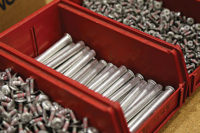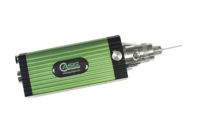Keep the new product pipeline flowing

As usual, our annual Capital Equipment Spending Survey provided a wealth of interesting and often contradictory data. Thirty percent of plants will spend more on assembly technology next year than they did this year, and only 20 percent will spend less. All totaled, U.S. factories will spend $2.94 billion on assembly technology in 2014, a 3 percent increase. That’s good news.
Of the not-so-welcome numbers, none are more disturbing than this: Just 23 percent of plants will buy new equipment next year to make a new product. That compares with 29 percent in 2013 and 38 percent in 2012, and it’s an all-time low for the 18 years we’ve done this survey.
That’s scary, because while cost reduction has traditionally been the No. 1 reason for investing in assembly technology, the need to make a new product has always been among the top two or three. At least that was the case for the first 15 years our survey. Moreover, new product introductions typically require bigger capital budgets than say, cost reduction or quality improvement—think entire lines vs. single machines or components.
My fear is that manufacturers may have slashed their R&D budgets during the Great Recession and now there are fewer new products in the pipeline. Hopefully, that’s not the case, or if it is, the shortage will be temporary.
According to Booz & Co.’s annual Global Innovation 1000 study, R&D spending among the world’s top 1,000 companies did, indeed, decrease in 2010. Fortunately, it has been recovering since then. R&D spending among the top 1,000 reached an all-time high of $638 billion in 2013, an increase of 5.8 percent from 2012, compared to 9 percent-plus growth in the two previous years. R&D spending was once again highest in dollar terms at North American companies ($248 billion, an 8.6 percent increase over last year). And Europe’s R&D spending ($189 billion, a 4.5 percent increase from 2012) continues to be the second-highest.
Over the past year, only Japan reduced its total R&D spending, the first time any major country has decreased its year-over-year spending since the 2008 crash. Even Europe increased its R&D investment, despite being mired in recession.
The importance of R&D has not been lost on our chief manufacturing rival, China. Not content to simply make products developed elsewhere, China is pouring money into R&D. That country’s R&D spending increase of 35.8 percent this year was the highest of any region. Though accounting for only 3.2 percent of all Global Innovation 1000 funds, Chinese companies have been increasing their R&D budgets far more rapidly than those in North America or Europe. Between 2008 and 2013, their share of global spending has risen from 0.4 percent to 3.2 percent—a sevenfold increase.
If we are to stay competitive globally—and keep our assembly lines humming—we must continue to invest in R&D. Let’s keep the new product pipeline flowing.
Looking for a reprint of this article?
From high-res PDFs to custom plaques, order your copy today!





